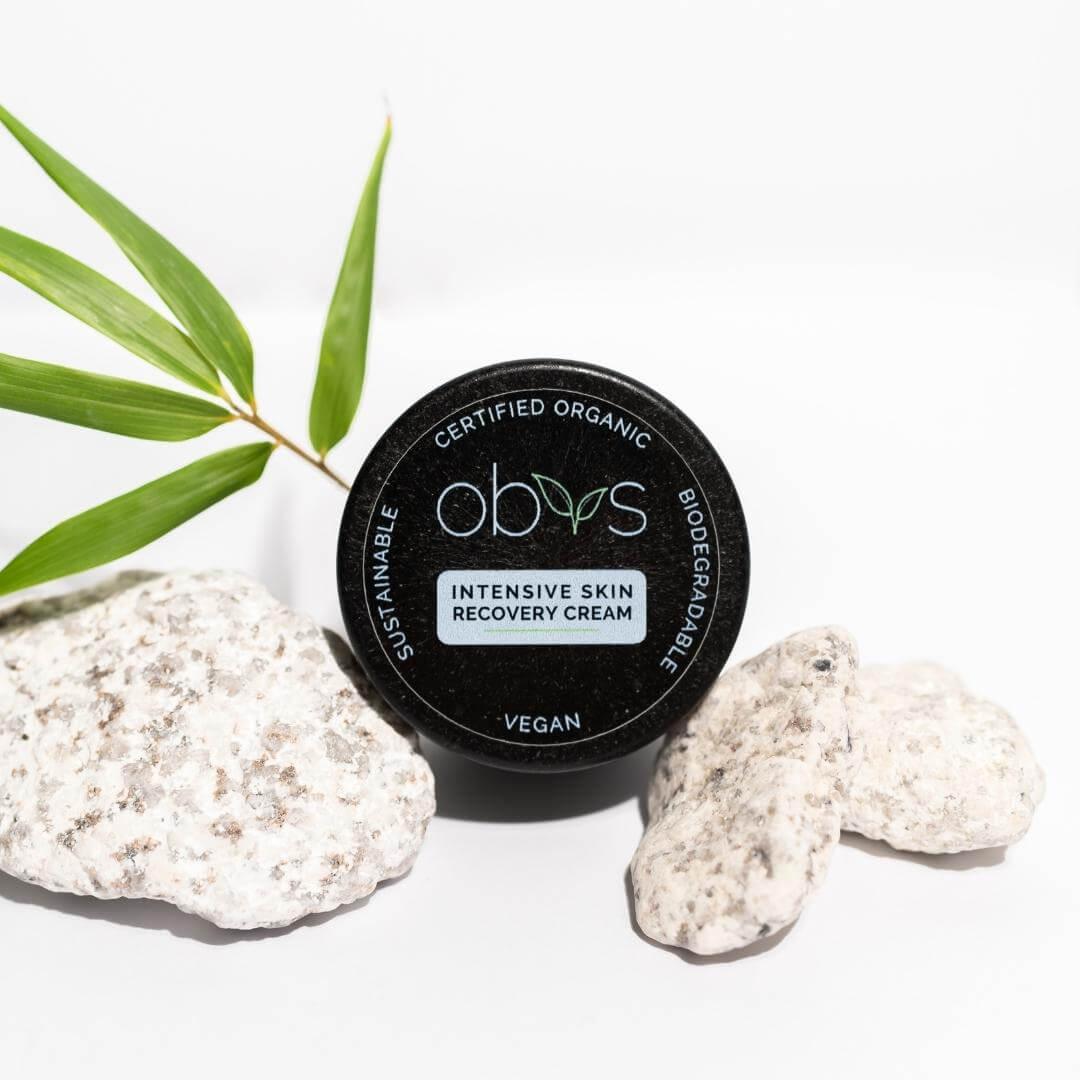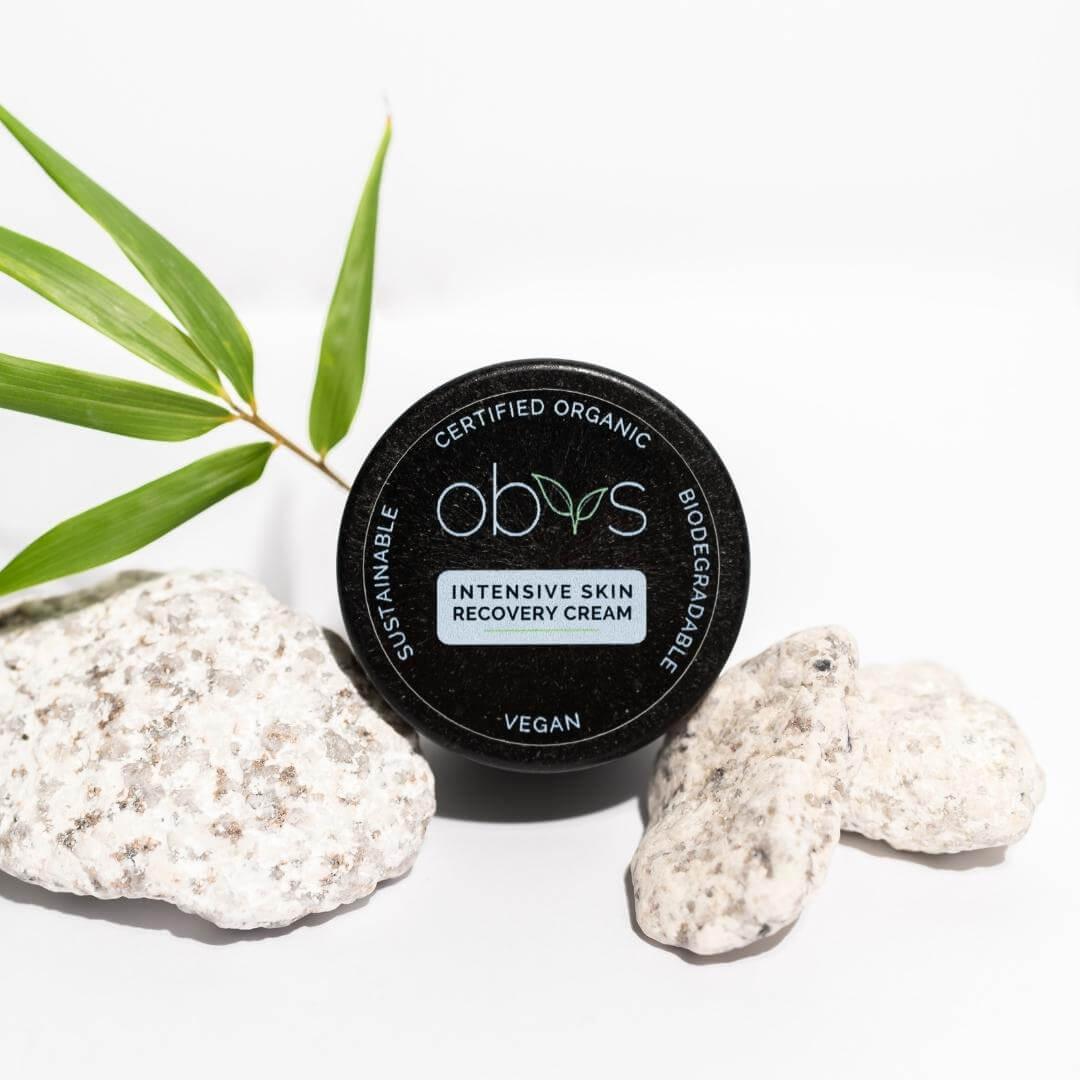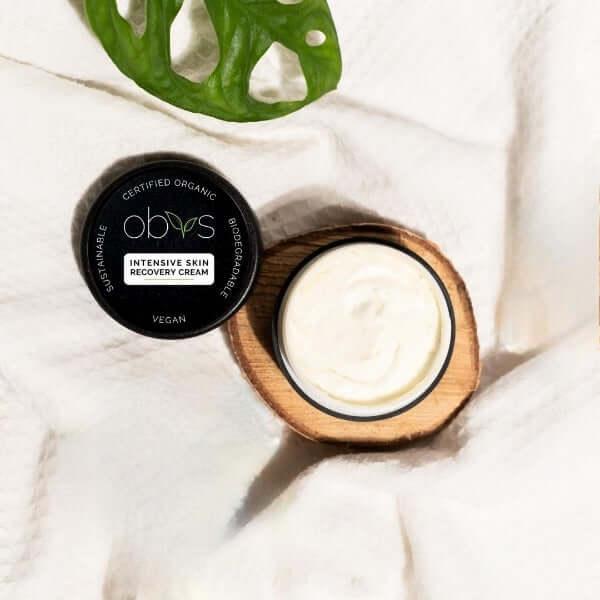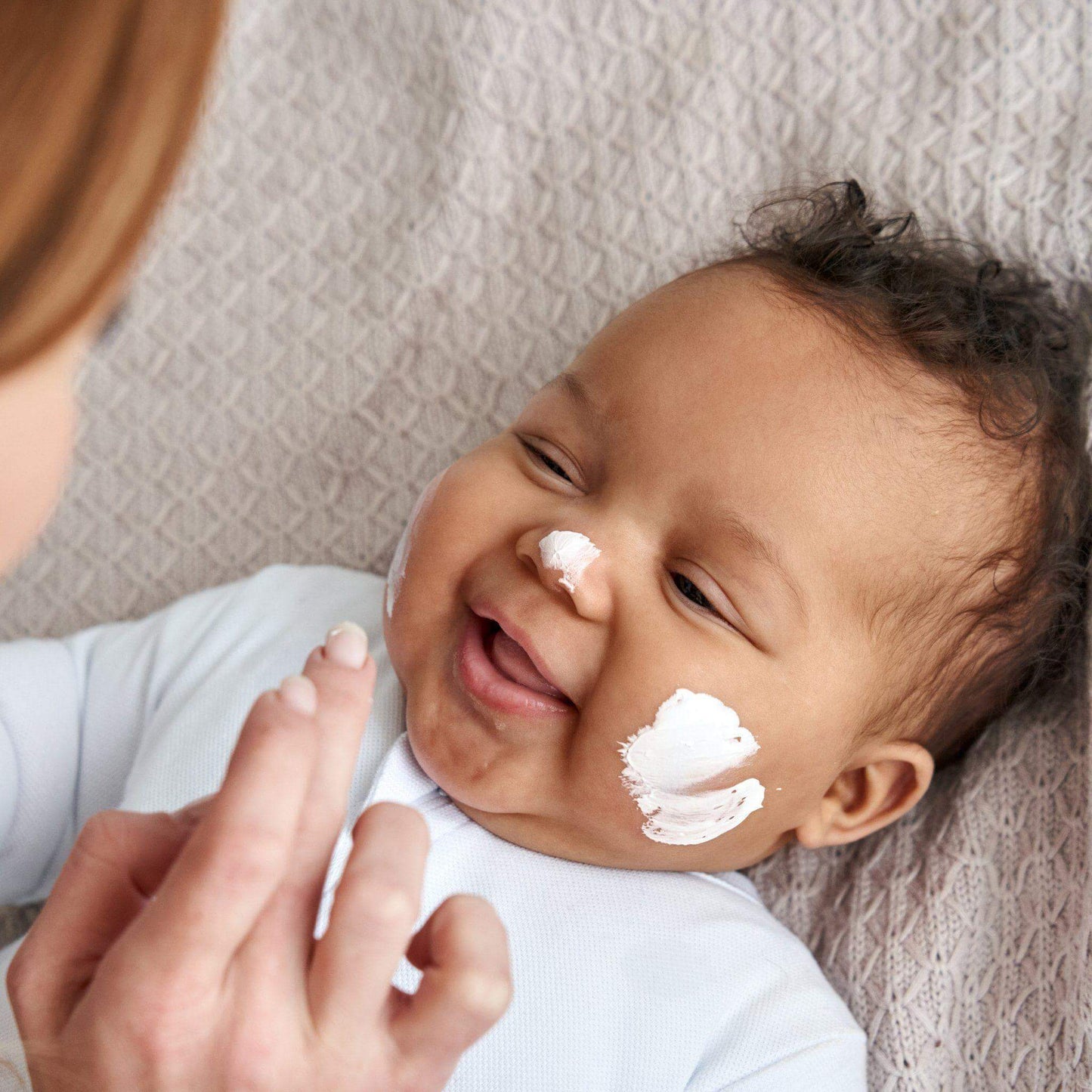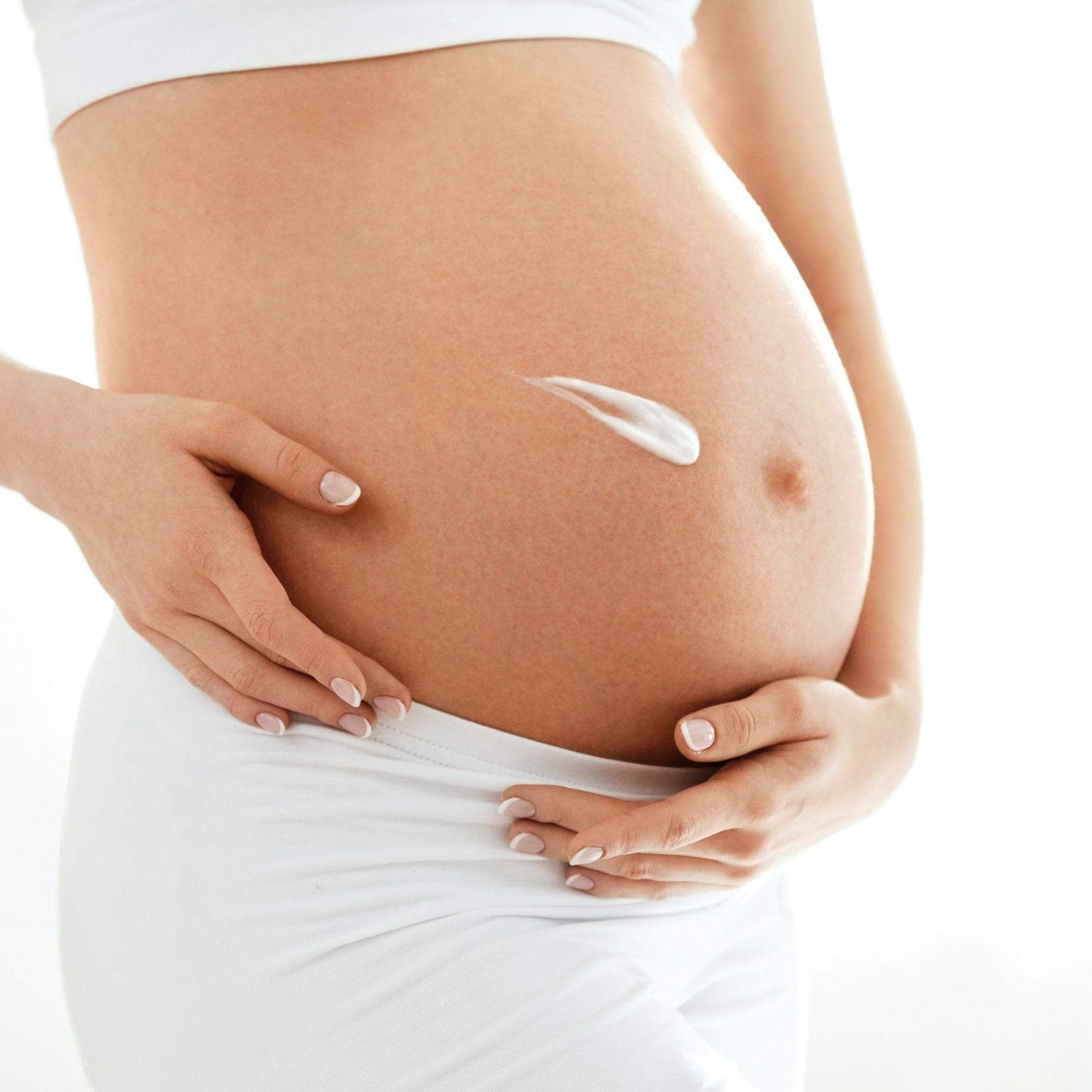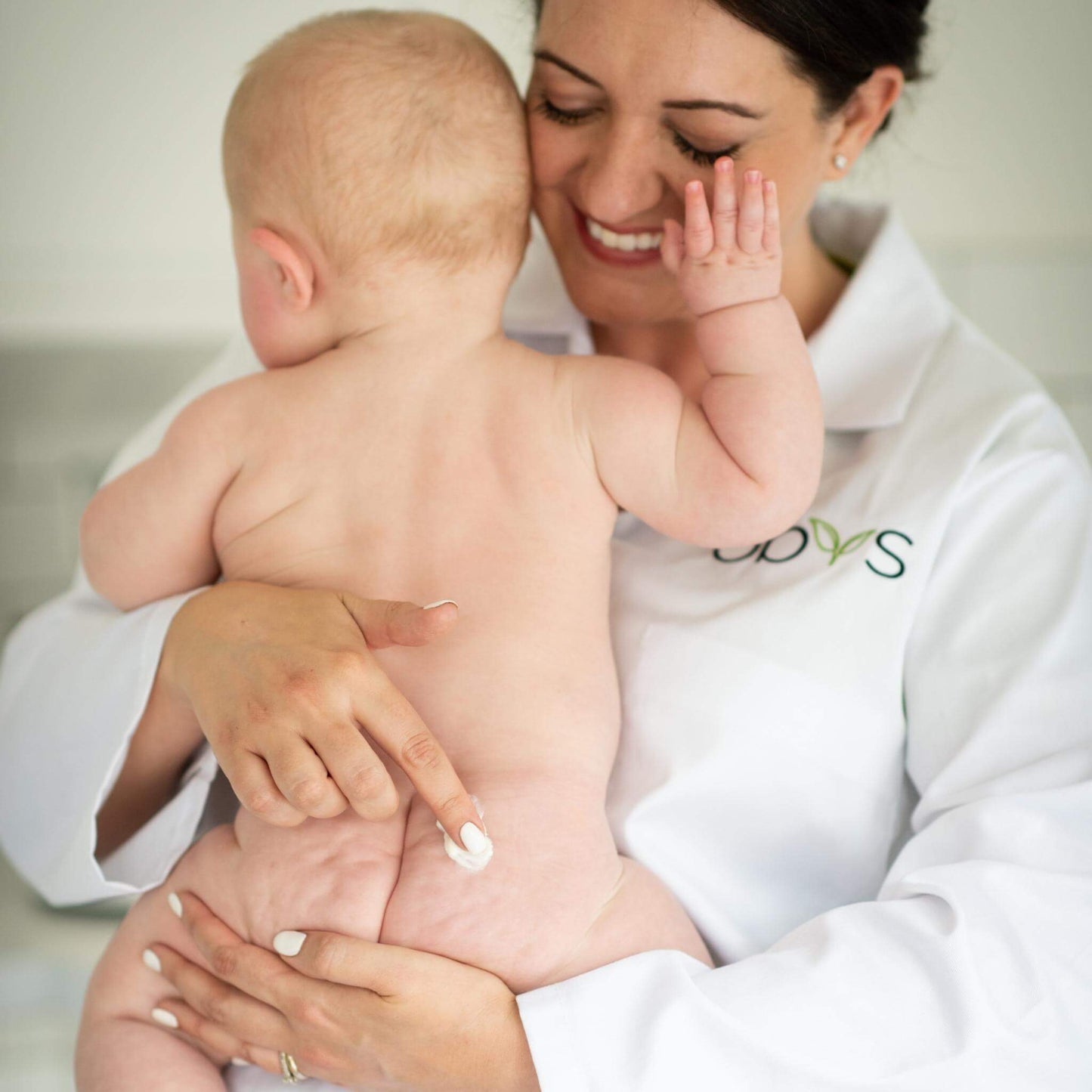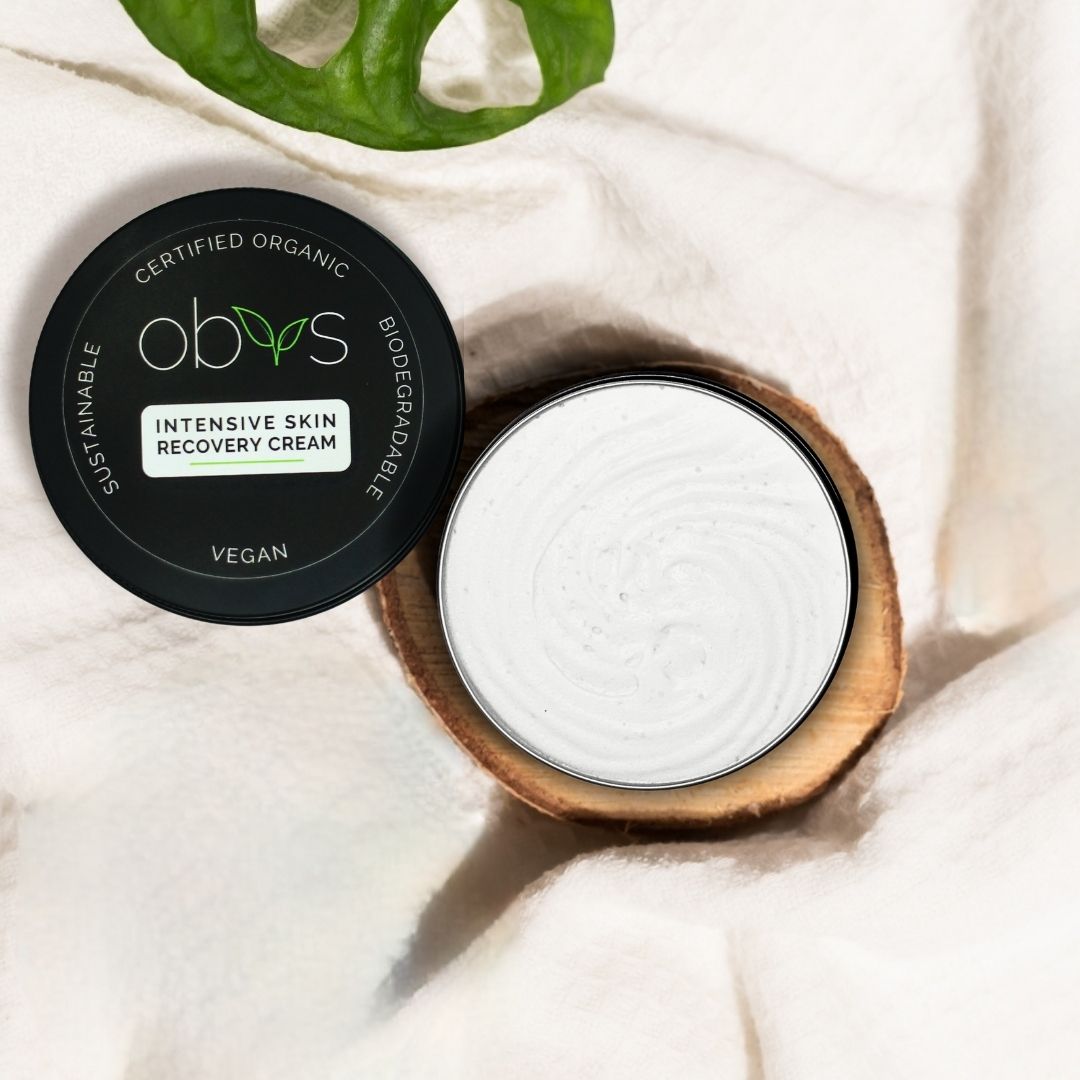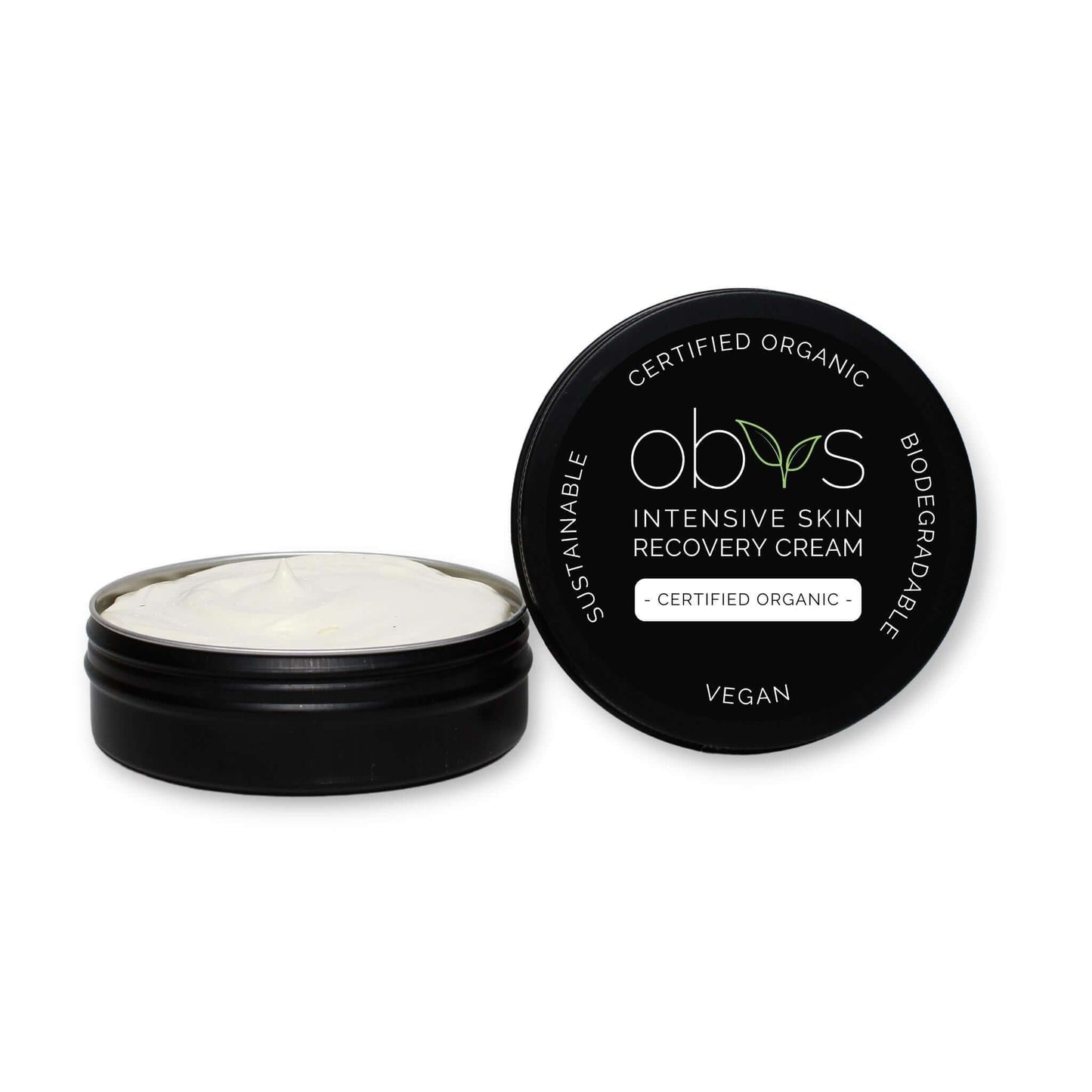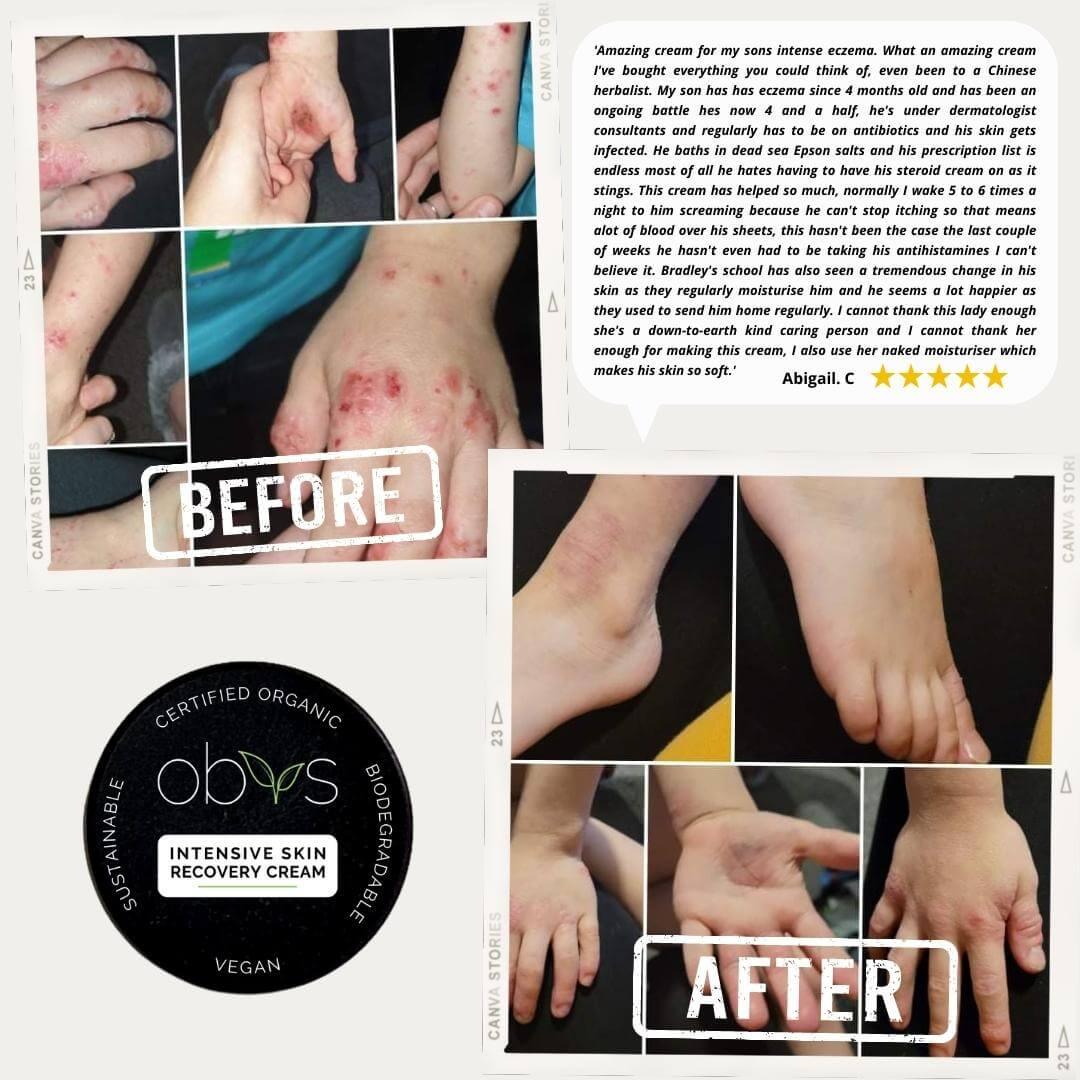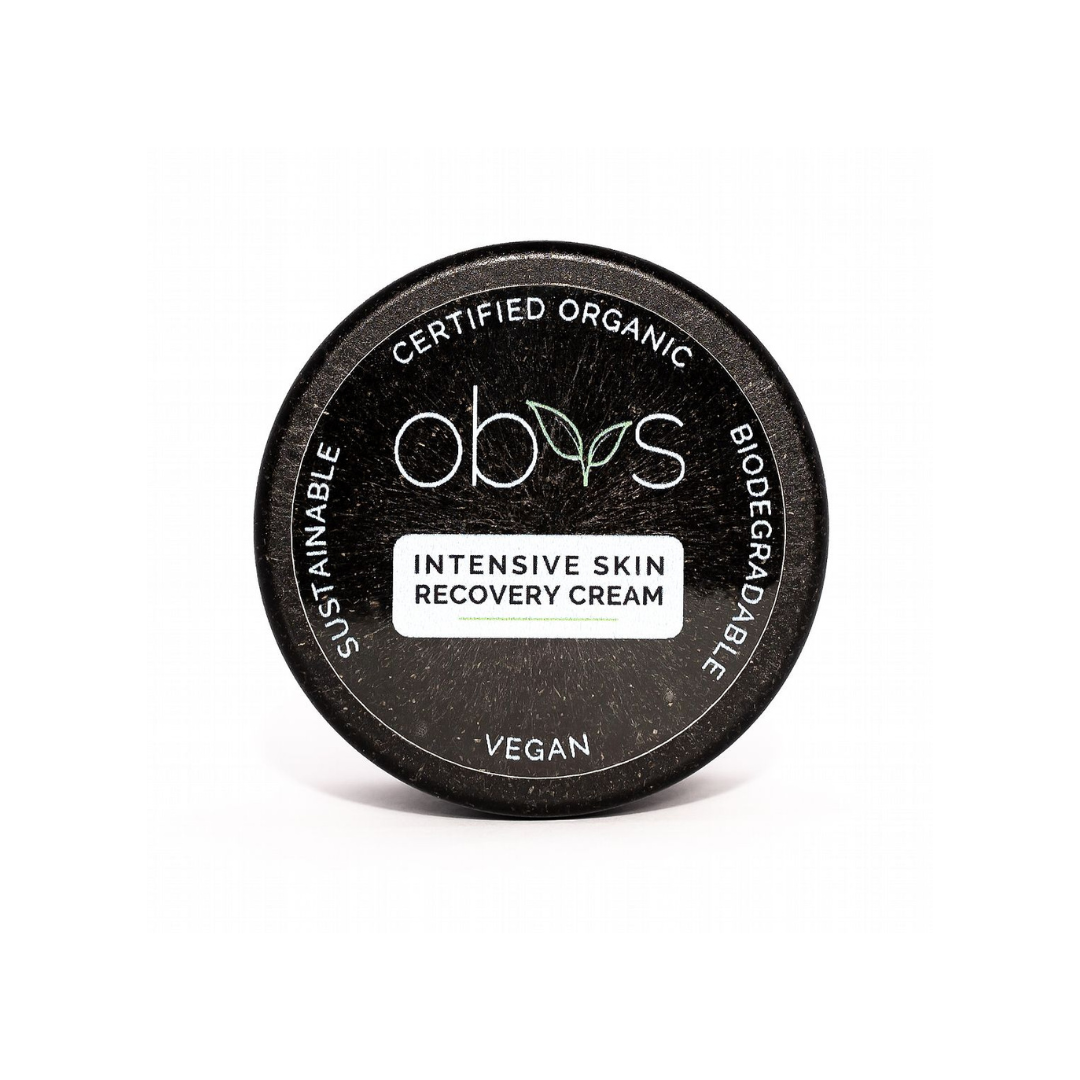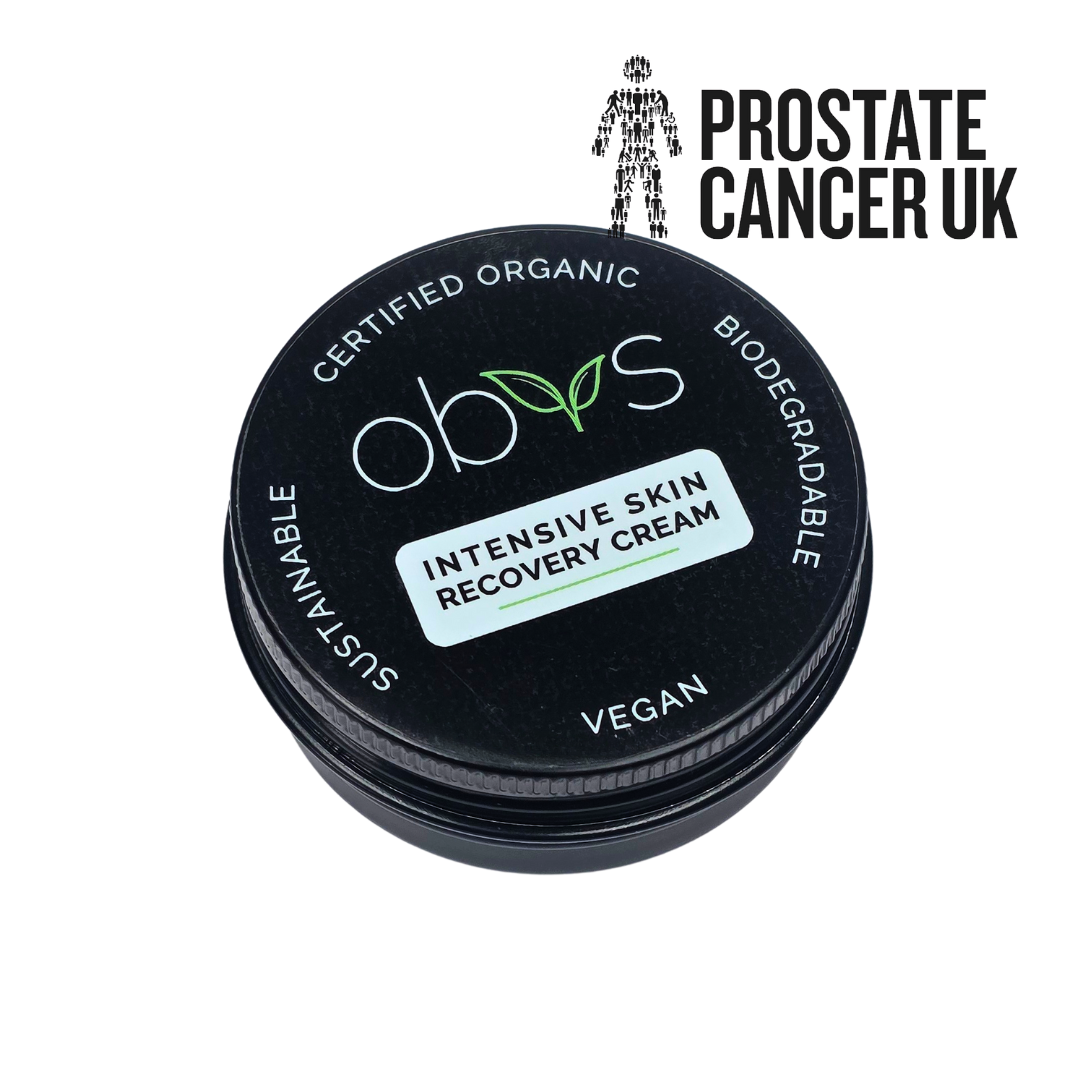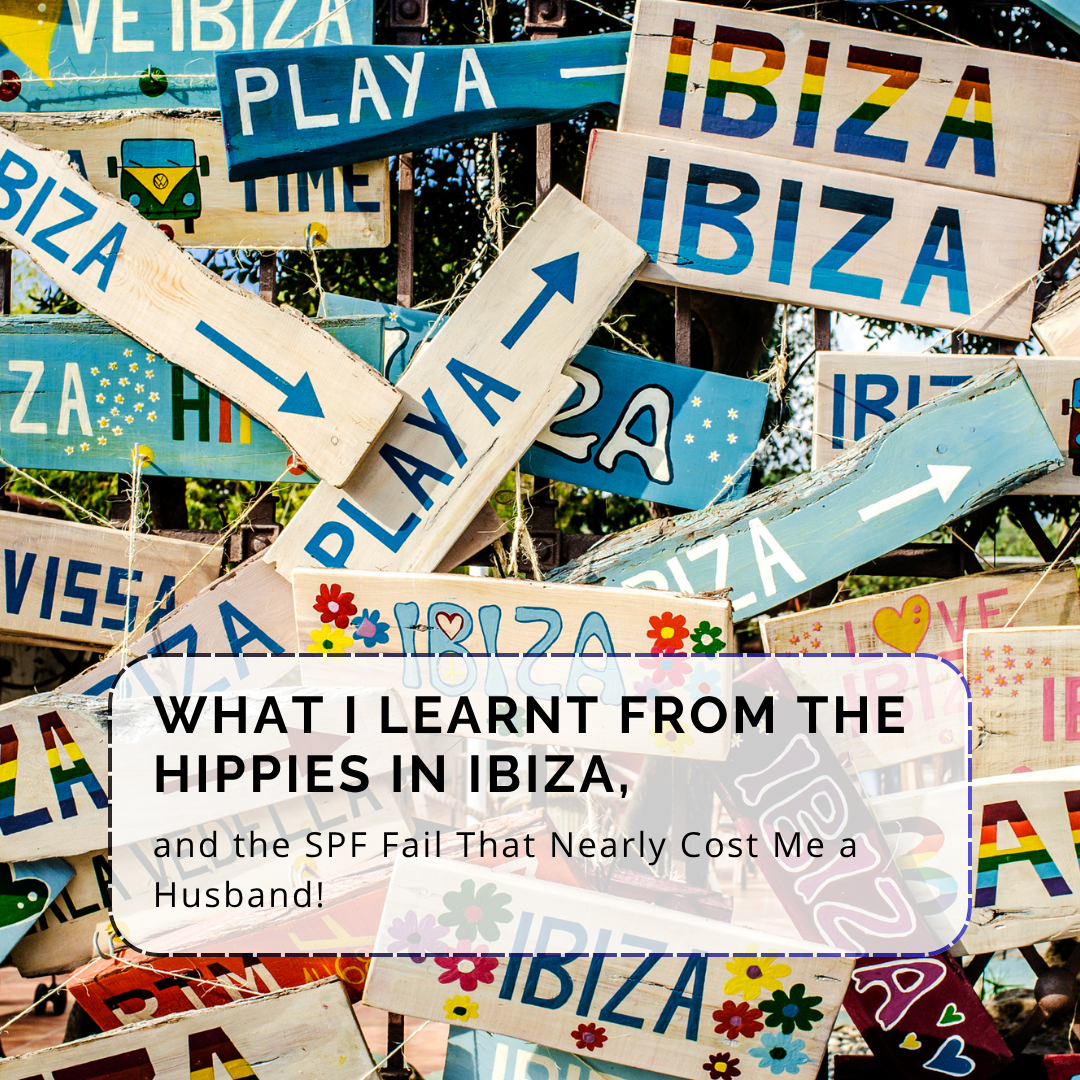
What I Learnt from the Hippies in Ibiza, and the SPF Fail That Nearly Cost Me a Husband
Share
Ibiza is a land of contrasts. On one side, you have the techno-fuelled chaos of San Antonio, with its neon lights and relentless party vibe. On the other, the incense-burning, barefoot-living crowd who read ingredient labels like sacred texts and know that “natural” doesn’t mean “nothing.” I discovered the importance of choosing a safe, eco-friendly sunscreen while navigating Ibiza’s vibrant markets.
I dipped into both worlds, but unsurprisingly, I gravitated toward the slower-paced part of the island where people care about what’s actually in their skincare, not just what sounds pretty on the packaging.
But here’s the thing: I don’t blindly follow trends or ancient rituals. I respect the ethos of conscious living, absolutely. But with a background in biochemistry and a Master’s in Research Methods, my first question is always, where’s the science?
When it comes to mineral sunscreen, it turns out both the hippies and the scientists are right. And that’s where things get interesting.
The Truth About Sunscreen in Tourist Ibiza
In most tourist shops, especially in the San Antonio area, the sunscreen aisle is dominated by high-street suspects or imported chemical blends. These contain filters like oxybenzone, octinoxate, and octocrylene, compounds well documented as endocrine disruptors, potential allergens, and environmental pollutants. This is why choosing a chemical-free sunscreen is so important.
Yes, they’re legal, but are they safe? The answer isn’t simple.
Take oxybenzone, for example. This ingredient doesn’t just sit on your skin; it’s absorbed into the bloodstream, detected in urine, and even breast milk. A 2020 study published in Toxicology Letters found that oxybenzone can accumulate in the body after repeated application, raising concerns about its long-term effects on hormonal systems. It also wreaks havoc on coral reefs, which is why it’s banned in places like Hawaii and Palau, following research from Environmental Science & Technology (2021) that demonstrated its role in coral bleaching and sunscreen environmental impact.
Yet these chemical sunscreens are the ones most people still use, often unknowingly. Sometimes, even your own husband.

My Husband, the SPF Rebel
Meet Alistair. A gorgeous man with Bajan roots, his mother was a beautiful Black Bajan woman, and his dad was a striking Caucasian ginger man. Despite his heritage, he held on to the stubborn belief that he wouldn’t burn in the sun.
Did I try to educate him about UV radiation, melanin distribution, and cumulative sun damage? Yes, and I backed it up with studies. A 2023 review in The Journal of Investigative Dermatology emphasised that UV protection for all skin types is critical, as higher melanin levels offer some protection against UVB rays but don’t fully shield against UVA-induced damage, which can lead to photoageing and skin cancer.

Did he listen? No.
Did he burn on day one in Ibiza? Predictably, yes.
Luckily, I’d packed a mini tin of my Intensive Skin Recovery Cream. As a kind (slightly perverted) wife, I offered to apply it to his chest, which provided instant sunburn relief. It also soothed mosquito bites, and even helped my flip-flop-induced blisters, thanks to its formulation with non-nano zinc oxide and other calming ingredients
The Sunscreen Fail That Nearly Ended Our Marriage
Since he (finally) agreed to share, we ran low on my prototype mineral sunscreen, formulated with non-nano zinc oxide and zero synthetic filters, designed to be gentle, effective, and reef-safe SPF.
I sent Alistair off to buy another sunscreen in case we ran out.
What did he come back with?
A chemical sunscreen loaded with every ingredient I actively warn people about.
Cue a knowing glance, followed by a passionate "discussion" about how to choose safe SPF. It was almost grounds for a dramatic Ibiza breakup.
 But no judgement from me; everyone’s got different budgets and priorities. I’m just here to break down the sunscreen ingredients explained so you can make an informed choice.
But no judgement from me; everyone’s got different budgets and priorities. I’m just here to break down the sunscreen ingredients explained so you can make an informed choice.
You can see my video about this here on Instagram — (Almost a week in Ibiza... my sunglasses to protect your eyes, not mine 😜🤣)
Why Homemade SPF Risks Your Skin: My Debate with Sam
While wandering through a local market, I met Sam, a beautiful hippie with a radiant glow and a passion for DIY skincare. She proudly showed me her homemade SPF, a blend of coconut oil, shea butter, and zinc oxide powder she’d mixed in her kitchen. She swore it was just as good as any store-bought chemical-free sunscreen.
I couldn’t hold back. With all due respect to her craft, I explained why homemade SPF risks are serious. As a skincare scientist, I say this with care but also with urgency: SPF needs proper lab testing, and mineral filters like zinc oxide must be evenly dispersed using professional homogenising equipment. A 2024 study in Journal of Cosmetic Science highlighted that improper dispersion of zinc oxide in DIY formulations leads to uneven UV protection, leaving skin vulnerable to damage. There’s a reason non-nano zinc oxide sunscreen comes at a higher price, it reflects the rigorous testing, quality ingredients (especially if Soil Association certified), and skilled formulation work involved.
Sam argued that her natural approach was safer than “chemical soups,” but I pointed to the science: DIY mixtures might look good on paper, but once they melt under heat (hello, Ibiza sun), the zinc sinks to the bottom of the container, and you’re left rubbing in pure oils, basically cooking your skin. A 2023 article in Dermatology Reports warned that homemade SPF dangers include inadequate protection, increasing the risk of burns and long-term UV damage.
After a spirited debate, Sam conceded that lab-formulated mineral sunscreen might be worth a try. Victory for science, but I’ll admit her passion for natural skincare.
Mineral vs. Chemical Sunscreen: What’s Safer?
Here’s a quick breakdown of mineral vs. chemical sunscreen to help you choose:
| Type | Active Ingredients | How it Works | Safety Profile | Environmental Impact |
|---|---|---|---|---|
| Chemical SPF | Oxybenzone, Octinoxate, Octocrylene | Absorbs UV rays, converts to heat | Absorbs into bloodstream, potential hormone disruptor | Damages marine life, toxic to coral reefs |
| Mineral SPF | Zinc Oxide, Titanium Dioxide (non-nano) | Reflects UV rays off the skin | Sits on skin surface, non-irritating, safe for pregnancy | Reef-safe, biodegradable |
Mineral sunscreens, when properly formulated, start working immediately and are far less likely to irritate sensitive skin. A 2024 study in Journal of Cosmetic Dermatology confirmed that non-nano zinc oxide provides broad-spectrum UVA/UVB protection with minimal skin penetration, making it ideal for safe sunscreen for sensitive skin. The challenge? They’re surprisingly hard to find in most tourist spots, making it essential to pack the best mineral sunscreen for travel.
Key Lessons from My Ibiza Skincare Saga
- Ingredient Ignorance is Common: Most people don’t know what’s in their sunscreen, even the health-conscious and ingredient-savvy.
- No One is Immune to UV Damage: Melanin offers some natural protection, but UV protection for all skin types is essential. A 2025 study in Photodermatology, Photoimmunology & Photomedicine reiterated that all skin types are susceptible to UV-induced DNA damage, emphasising the need for consistent reef-safe SPF use.
- Be Your Own Detective: Flip the bottle, research anything you can’t pronounce, and don’t be shy about asking questions to understand sunscreen ingredients.
- Pack Your Own SPF: Always pack your own non-toxic sunscreen when you travel; don’t rely on what’s on the shelves.
- Avoid DIY SPF: Homemade SPF dangers are real. Without lab-grade equipment and testing, you’re risking your skin’s health.
- Intensive Skin Recovery Cream is a Lifesaver: A well-formulated recovery cream with skin recovery cream benefits isn’t just a luxury; it can save your skin and possibly your marriage.
Ready to switch to chemical-free sunscreen? Check out our other blog for more info. (Obvs SPF coming next year!).
My Takeaway: Respect the Hippies, Trust the Science
I adored the slower pace of Ibiza, the hand-poured essential oils, and the idea of living more simply. But I’ll always meet natural skincare Ibiza with a microscope and a rigorous checklist.
The sweet spot lies at the intersection of nature and science, not opposing them.
So yes, I’ll take the patchouli and sandalwood incense, but I’ll pair it with peer-reviewed studies and lab-tested eco-friendly sunscreen formulations.
And no, we’re definitely not divorced.
But next time, Alistair’s not allowed near the sunscreen aisle.
References
- DiNardo, J. C., & Downs, C. A. (2020). Systemic absorption of sunscreen ingredients: A review of oxybenzone and related compounds. Toxicology Letters, 329, 45–53.
- Downs, C. A., et al. (2021). Toxicopathological effects of the sunscreen UV filter, oxybenzone, on coral reefs. Environmental Science & Technology, 55(5), 3472–3481.
- Rigel, D. S., et al. (2023). UV radiation and skin cancer: Implications for all skin types. The Journal of Investigative Dermatology, 143(4), 567–574.
- Lim, H. W., et al. (2024). Mineral sunscreens: Safety and efficacy for sensitive skin. Journal of Cosmetic Dermatology, 23(6), 1890–1897.
- Wang, S. Q., & Xu, S. (2025). UV-induced DNA damage across skin phototypes: Implications for photoprotection. Photodermatology, Photoimmunology & Photomedicine, 41(1), 12–20.
- Green, M., et al. (2024). Challenges in DIY sunscreen formulations: Uneven dispersion and inadequate protection. Journal of Cosmetic Science, 75(3), 112–120.
- Patel, N., & Lee, S. (2023). Risks of homemade sunscreens: A review of consumer trends and safety concerns. Dermatology Reports, 15(2), 9478.

